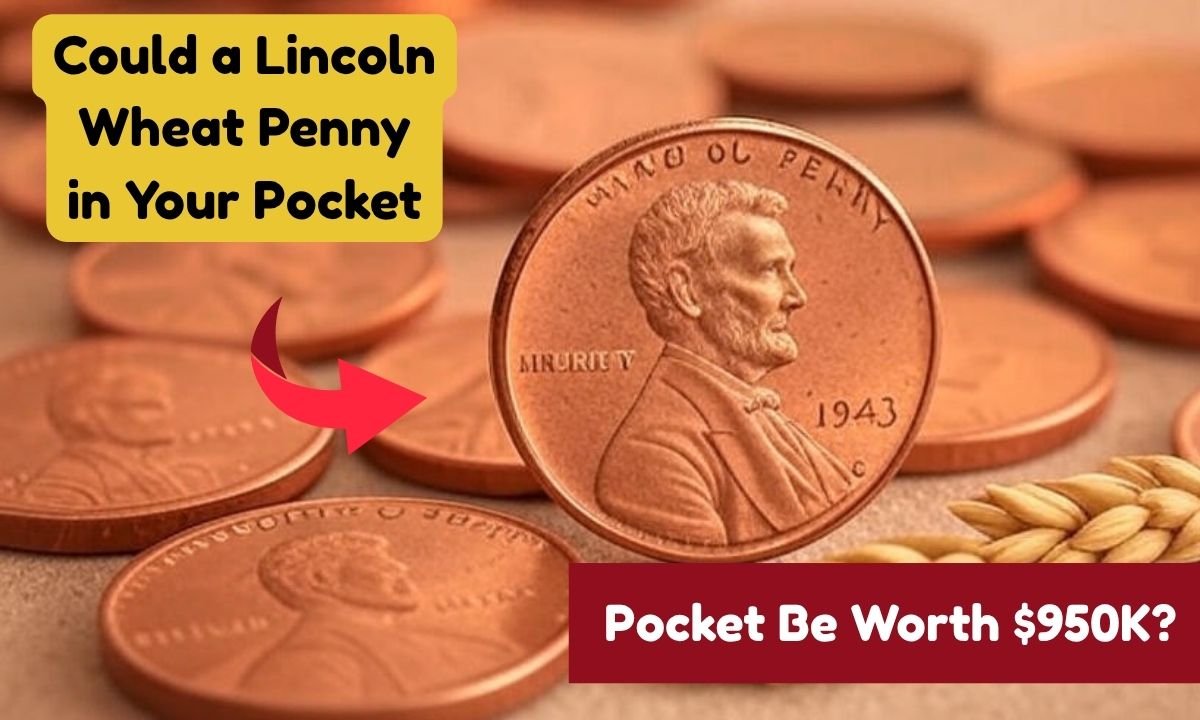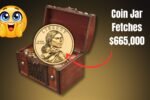Ever tossed a penny into a jar or left it in your pocket without a second thought? What if I told you that one of those tiny coins could be worth nearly a million bucks? Sounds like a dream, right? Well, for some lucky folks, that dream has come true with the Lincoln Wheat Penny. This little piece of copper could be hiding in your change, waiting to turn your life around. Let’s dive into the exciting world of these pennies and find out why they’re worth so much and how you might spot one!
What’s a Lincoln Wheat Penny Anyway?
Picture this: it’s 1909, and the U.S. Mint decides to honor Abraham Lincoln’s 100th birthday with a brand-new penny. This coin, called the Lincoln Wheat Penny, was a big deal because it was the first U.S. coin to show a real person’s face instead of a symbol like Lady Liberty. On one side, you’ve got Lincoln’s portrait, and on the other, two stalks of wheat framing the words “ONE CENT.” That’s why collectors call it the “Wheat Penny.” These coins were made from 1909 to 1958, and while billions were minted, a few rare ones are worth a fortune today.
Why are they so special? It’s all about rarity and mistakes. Some pennies were made with errors, like being stamped with the wrong metal or having doubled letters. These quirks make certain Wheat Pennies super valuable to collectors, kind of like finding a rare Pokémon card in a pack!
The Star of the Show: The 1943 Copper Penny
Let’s talk about the rockstar of Wheat Pennies—the 1943 copper penny. During World War II, copper was needed for the war, so the Mint switched to making pennies out of steel. But, by some fluke, a few copper pennies were made in 1943 by mistake. These are like unicorns in the coin world—only a handful exist! One of these rare beauties sold for $950,000 at an auction, and some even say they could be worth over a million in perfect condition.
How do you know if you’ve got one? Grab a magnet. Most 1943 pennies are steel and will stick to it. If your 1943 penny doesn’t stick and has that reddish-brown copper look, you might be holding a treasure. But don’t get too excited yet—fakes are out there, so you’ll need a pro to check it out.
Other Wheat Pennies to Watch For
The 1943 copper penny isn’t the only one that can make you rich. There are other Wheat Pennies that collectors drool over. For example, the 1909-S VDB penny, made in the first year with the designer’s initials (VDB) on the back, is super rare because only about 484,000 were made. Even in okay condition, these can sell for thousands. Then there’s the 1955 Double Die penny, where the date and words look doubled because of a minting error. These can fetch tens of thousands, too!
Ever wonder what makes these coins so pricey? It’s like finding a first-edition book or a vintage car in mint condition. The fewer there are, and the better they look, the more collectors will pay to get their hands on them.
How to Spot a Valuable Penny
Ready to play treasure hunter? Checking your pennies is easier than you think. First, look at the date. Key years to watch for include 1909-S, 1914-D, 1922 (with no mint mark), and, of course, 1943 copper. Next, check for a mint mark—a tiny letter under the date. “S” means San Francisco, “D” means Denver, and no mark means Philadelphia. Coins from San Francisco or Denver are often rarer.
Also, look for weird stuff like doubled letters or off-center designs. And don’t forget condition! A shiny, barely-worn penny is worth way more than a scratched-up one. If you think you’ve got a winner, don’t clean it—cleaning can ruin its value. Instead, pop it in a plastic holder and take it to a coin dealer or grading service like PCGS or NGC.
Could You Really Find One?
Here’s the fun part: these valuable pennies might still be out there! People have found them in pocket change, old coin jars, or even at flea markets. Imagine buying a coffee and getting a $950,000 penny in your change! It’s rare, but not impossible. Every time you get a handful of coins, take a quick peek. You never know when luck might strike.
Coin collecting, or numismatics, isn’t just about money—it’s like a history lesson in your pocket. These pennies were around during World Wars, the Great Depression, and more. Each one tells a story, and finding a rare one is like uncovering a piece of the past.
Tips to Keep Your Pennies Safe
Found a penny that looks old? Handle it like it’s a fragile heirloom. Don’t toss it around or scrub it clean. Store it in a protective sleeve and get it checked by a professional. If it’s valuable, they’ll tell you how to sell it—maybe at an auction or to a collector. The key is to treat every old penny like it could be a gem until you know for sure.
Conclusion
Who knew a simple penny could be worth almost a million dollars? The Lincoln Wheat Penny is proof that treasures can hide in the most ordinary places. Next time you’re sorting through your change or cleaning out a drawer, take a closer look. That little copper coin might just be your ticket to a life-changing payday. So, grab a magnifying glass, check those dates, and join the treasure hunt. You might not find a $950,000 penny every day, but the thrill of the search is worth it!
FAQs
What makes a Lincoln Wheat Penny valuable?
Rarity, minting errors, and good condition make some pennies worth a lot. Coins like the 1943 copper penny are super rare because of a wartime mistake.
How can I tell if my 1943 penny is copper?
Use a magnet. If it doesn’t stick and looks copper-colored, it might be the rare one. Get it checked by a coin expert.
Where can I sell a valuable penny?
Take it to a reputable coin dealer or auction house. Professional grading services can also help you get the best price.
Are all Wheat Pennies worth a lot?
Nope, most are worth just a few cents. Only specific years, like 1943 copper or 1909-S VDB, can be super valuable.
Can I clean my penny to make it worth more?
Never clean an old penny! Cleaning can damage it and lower its value. Keep it safe and get it checked as is.




